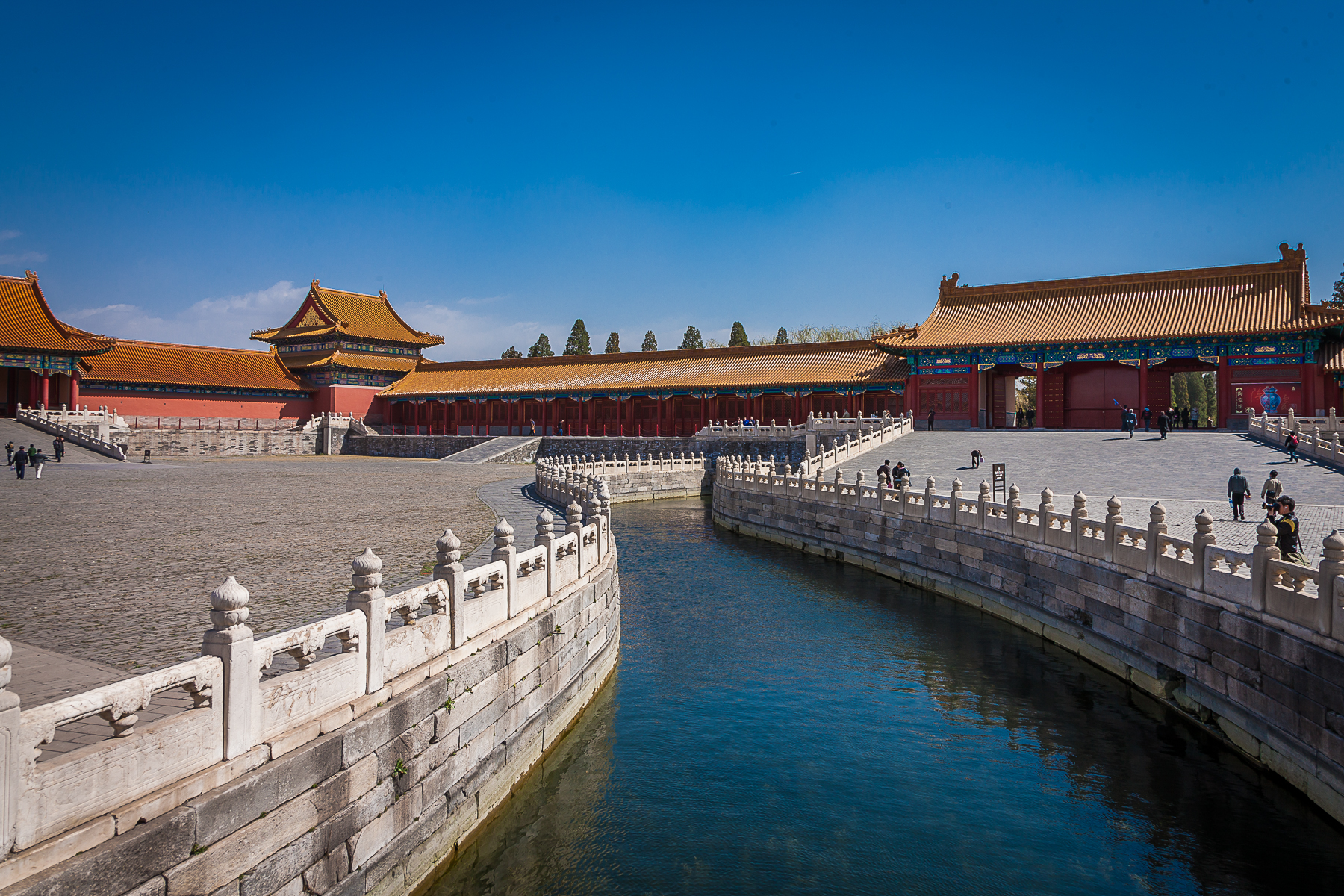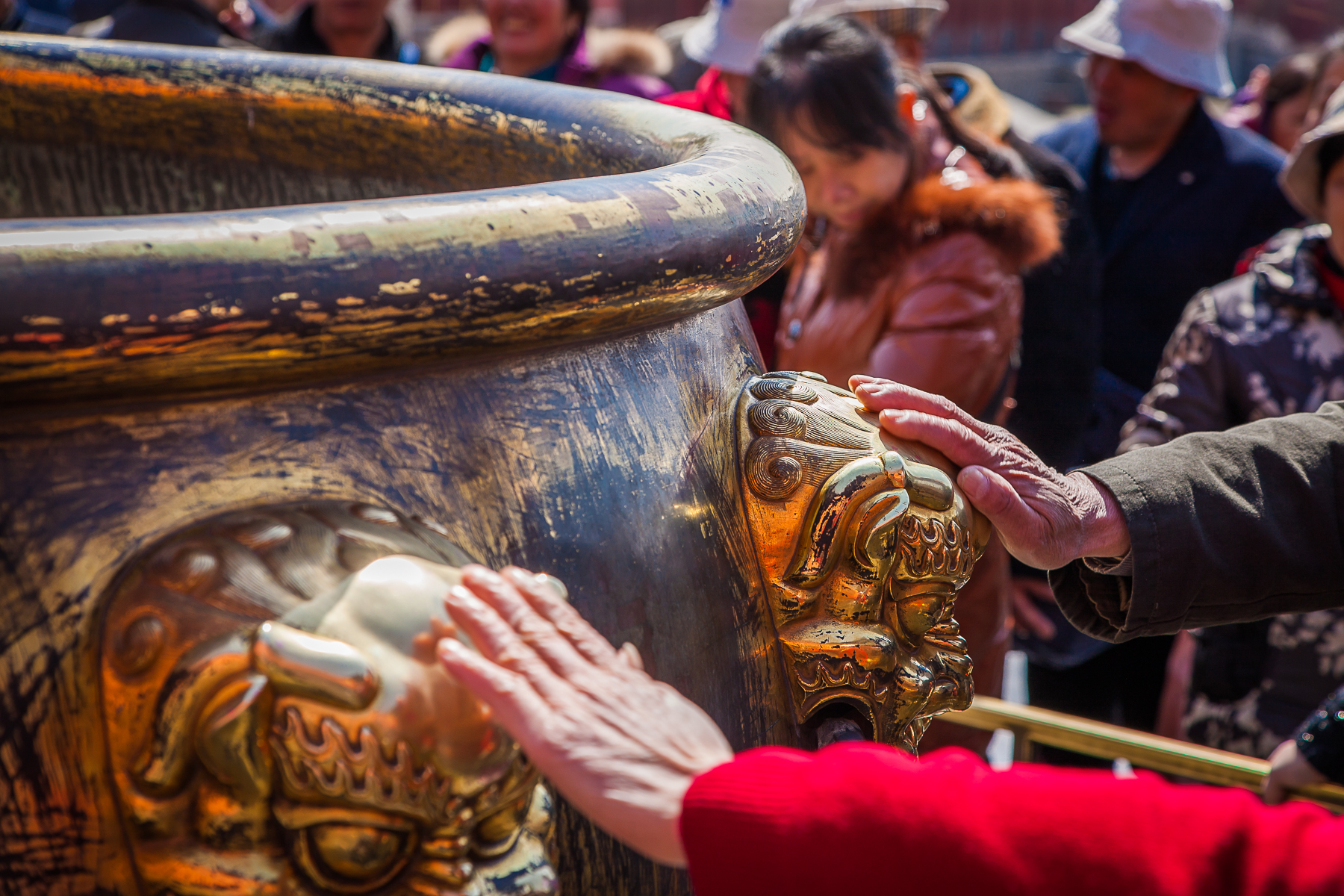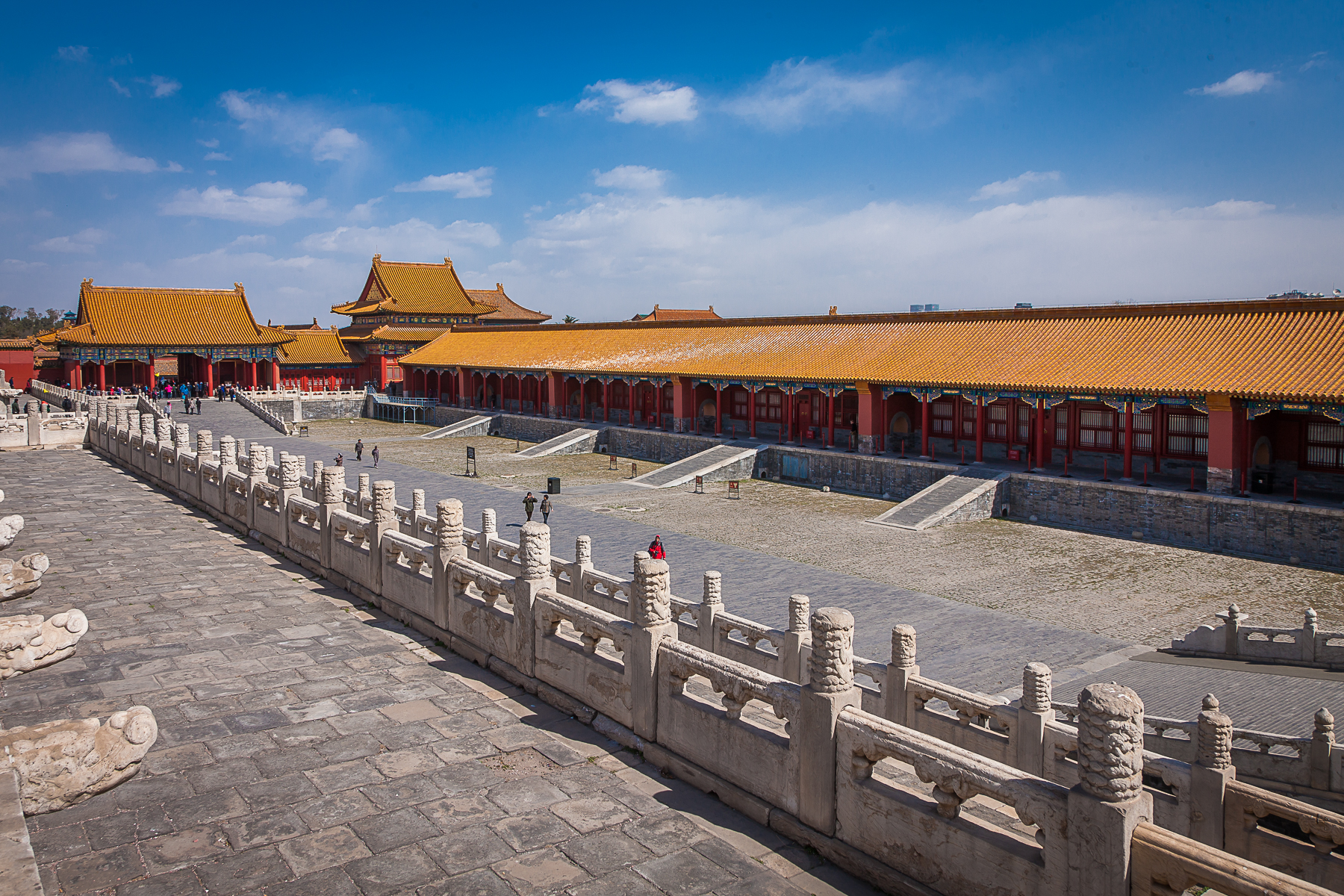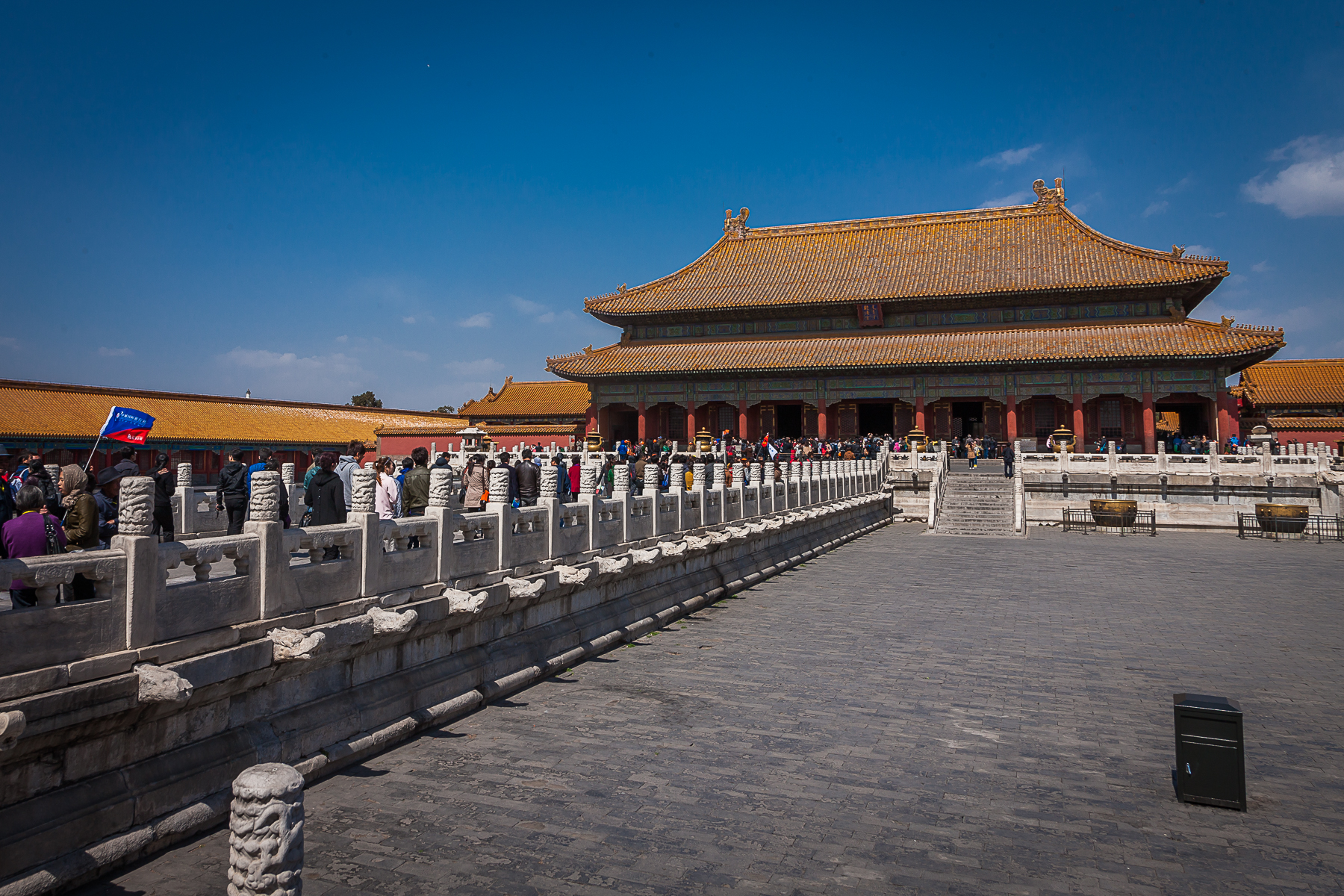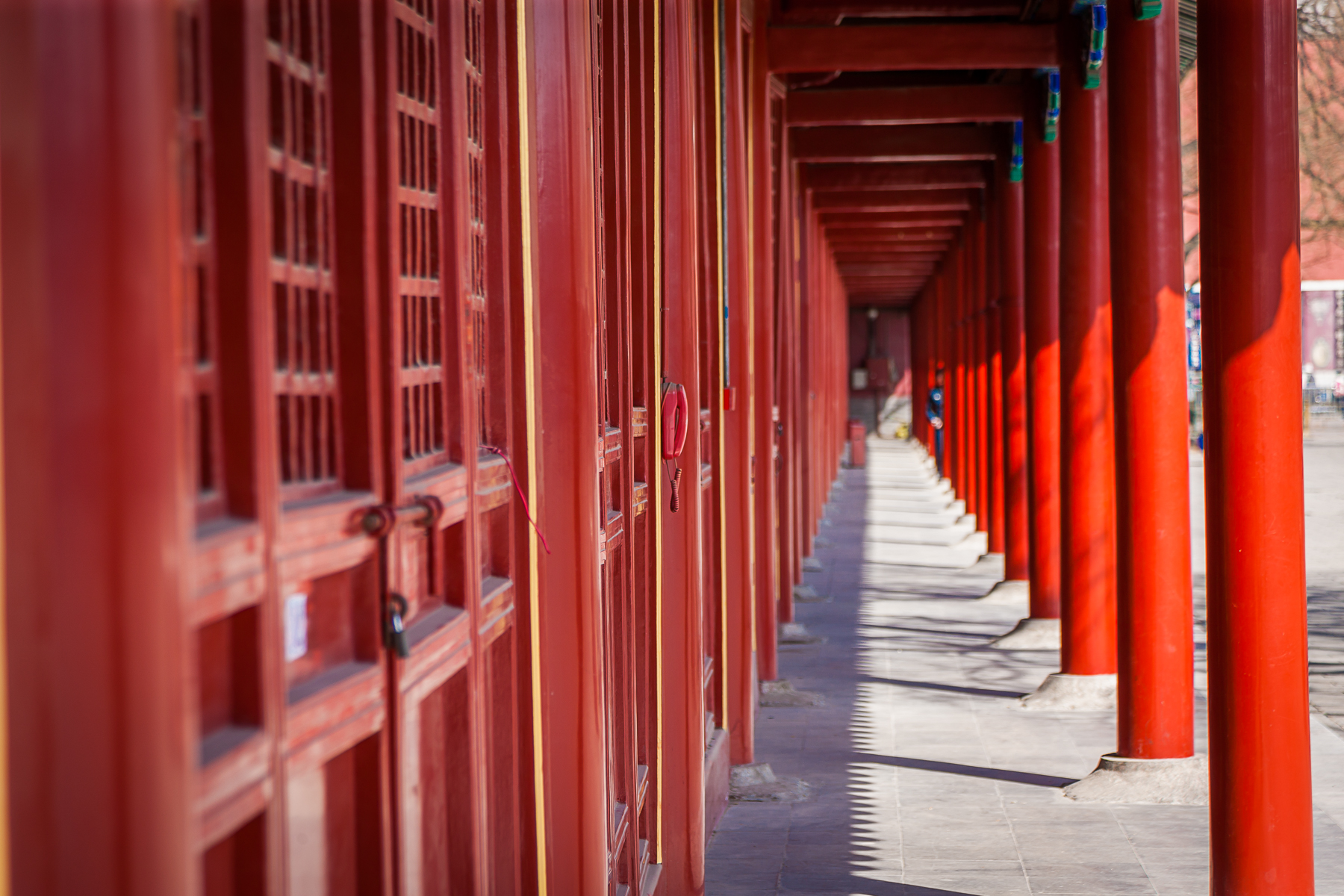THE FORBIDDEN CITY
It is touristy, no doubt, but no visit to Beijing should be without seeing the Forbidden city. This was the main imperial palace from the Ming to the Qing dynasty (XV to XX century), home to 24 emperors and the ceremonial and political center of Chinese government until the last Emperor abdicated in 1912.
The only way to enter the Forbidden City is from the Tiananmen Square through the Tiananmen Tower (Gate of Heavenly Peace). This consists of a tower that sits on a platform with give arch gateways. The center one was used as the specific passage for Ming and Qing emperors, while the smaller side ones were the passage for the minister and other officials. Above the archway hangs a large portrait of Mao Zedong, and you will probably come home with a photo from the square with Mao in the background. Two giant placards say "Long Live the People's Republic of China" and "Long Live the Great Unity of all World's Peoples".
The Forbidden City is divided into two parts: the Outer Court (southern section) where the emperor exercised his supreme power over the nation, and the Inner Court (northern) where he lived with his royal family. The Palace is full of symbolism- yellow was the symbol of the royal family, so this is the dominant color. Roofs are built with yellow glazed tiles, decorations in the palace are painted yellow, even most of the bricks on the ground are made yellow. The angular shape of the red city wall prevents attempts to climb it. The doors of the outer gates are square as it was believed at the time earth was square, but the doors of the inner gates are round (symbol of heaven).
The complex is very large so you should set aside enough time for it, at least half a day. When you get tired in the middle of it, there is a small cafe where, believe it or not, there used to be Starbucks (popularly called the Forbidden Starbucks.) In 2007 Starbucks was kicked out amid protests and the local cafe took its place.
Our guide explained the importance of number 9 for Chinese culture, and showed us door knobs on the Forbidden City doors. According to the engineering standards of the Ministry of Works of Qing Dynasty (1644-1911) , there were three kinds of arrangements for the gilded ornamental knobs on each of the double doors of the Forbidden City, ranging from 81 (nine rows of nine knobs) , 49 (seven rows of seven knobs) to 25 (five rows of five knobs). These symbolized three ranks, of which nine was the highest. Of course, there is one exception- East Flowery Gate has only 72 knobs (nine row of eight knobs), and explanations for that differ.
To get to the Forbidden city, you can take the subway, either Line 1 (Tian'anmen West or Tian'anmen East Stations) or Line 2 (Qianmen Station, Exit A). While you can only enter through the Meridian Gate (Tianannmen Tower), you can leave though both the Gate of Divine Prowess in the north or the East Prosperity Gate. As mentioned, it is best to come to this Palace with a guide- not only can he/she provide useful information but they can also help you buy the tickets (app. $10 per person). Kids under 1.2 meters (3.9 feet) can enter at no charge, while the older kids (and hence taller) pay around $3 to enter.





